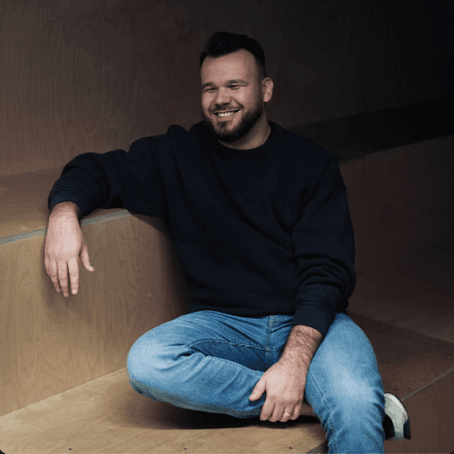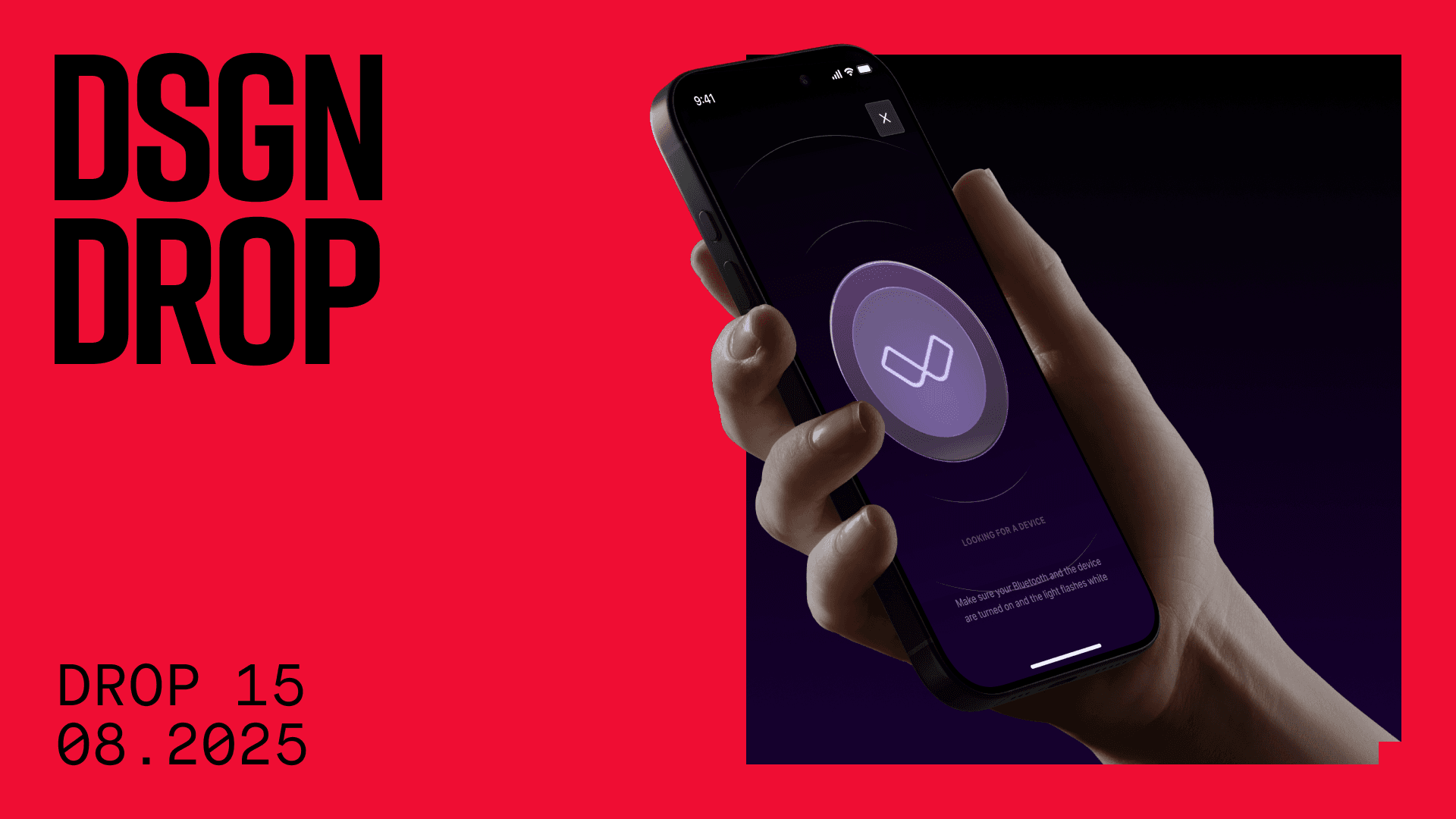As the company was bleeding money, team morale was at an all-time low and the investors were indecisive about the startup's future. We were grappling with the possibility of losing our jobs and the dream we had all worked so hard to build. That's when we came up with a crazy idea: we would infiltrate STRV, a leading engineering company, and join their team of talented developers. It was a long shot, but we were determined to make it work.
Fast forward to today, I'm proud to say that we succeeded in our mission and thrived in our new environment. As Go engineers, we brought our unique skills and expertise to STRV and, in turn, we’ve learned from some of the best in the business. Before joining STRV, it would have been hard to imagine being challenged even more than we’d been. Yet we've been growing, working on cutting-edge projects and pushing ourselves to new heights since day one. We’ve learned what it means (and what it takes) to be TOP developers.
In this article, I'll take you behind the scenes and share the inside story of how we “infiltrated” STRV, what challenges we faced along the way and how we've grown since then. So buckle up and get ready for a wild ride, because this is the story of Go engineers on the go!
And because the story is a long one, this is only the first part of it. You'll find the rest in Vol. 2.
How It All Started
The story of The Great Go Migration began in early 2022. We were six happy Gophers, 90% focused on their work and 10% on meme creation — or was it vice versa?
“It is possible that they will cut our financing.” The sentence that still rings in my ears. It was a wake-up call. Up until then, I had not for a second thought about the possibility of failure. And here it was. Bright and clear. It was a moment of clarity that made me realize that our team might break apart, way sooner than I’d initially expected. And yet, thinking back, it was a miracle that the startup lasted as long as it did.
When the news about us potentially going bust broke out, we had two choices: hope for a miracle or start looking for a job. As a man who’s been betrayed by luck way too many times, the latter seemed more appealing to me. The question was: “Do I want to lose the team?” And I really didn’t.
It’s hard to explain and not many people will understand but, to a certain extent, the guys on the team were irreplaceable to me. I realized their value from both professional and personal perspectives. And so, the decision was made – and the hunt for a company that would welcome all of us began. Just in case that miracle option didn’t work out.
Nowhere to Go
I scouted the market and found dozens of opportunities, companies just waiting for a team of six engineers to join them and work on an innovative new product. Can you imagine that? If you can, then you and I are cut from the same “dreamer” cloth. Because the opposite was true.
There were open positions for individuals, of course, but hardly any for a whole team. Many companies offered to hire all of us… and then spread us into multiple teams, products or even subsidiaries, or put us in a boring, monotonous corporate environment with career progress based on the “years served” instead of actual skills.
There were some remote work offers, too. That’s not so bad, but still — not satisfactory. We like to work together, in the same office, telling dirty jokes and tasting various yet undiscovered flavors of tea.
After about two months of continuously writing emails to both local and foreign startups and corporates, responding to open positions with a proposal of taking the whole team with me and, as a result, going through countless interviews only to find out that I’d be the only one getting an offer… I was given yet another reality check. Nobody recognized the value of my team the way I did. Nobody but one company: STRV.
A Different Kind of Company
It was kind of a stroke of luck. One day, after having been through yet another set of interviews, I was sitting with Rob, a good friend of mine. We’d worked together in the startup. Unlike the rest of us, however, he managed to jump ship about half a year before the company hit the icebergs. I was rambling about the job search when all of a sudden, as if he’d just remembered, he proposed, “Hey, I think we were considering adding a secondary tech stack in the past. The company considered Go.”
That company was, of course, STRV – a software design and engineering company. I knew he’d been working at an agency and had he not been so happy there, always speaking so highly of STRV and its culture, I wouldn’t have even considered an agency as a suitable place for us. By default, I was prejudiced and biased against any software development agency. I thought they were all simply body shops that don’t care about the product or the people.
In this specific case, however — thanks to the friend I value and respect — I decided to give STRV a chance. “Aight, Rob, I’ll check ‘em out.” That night, I scanned their website. And something felt… different.
The Next Level
Different. That’s the first thing that came to mind when I opened the website. Unconventional. Unique. Creative. But also… provoking, riveting and challenging. I liked that. It piqued my interest. While browsing through their blog, I stumbled upon an article by Lubo Smid, the co-founder and current CEO of STRV. In it, there was a paragraph that read:
“While you’re still feeling a company out, meet and ask about the team. How do they identify top talent? Do they contribute to their community via open source, conferences, workshops? Check out their published material and past projects. And because you’re about to place a lot of trust into these people, make sure you actually like them. Listen to your gut.”
It was meant for the potential clients, a.k.a. partners, of STRV. But what’s the difference between us, the developers who are willing to work for STRV, and the clients who want to work with STRV? Sure, one relationship is significantly better financially for the company than the other, but they are similar relationships. I continued scanning through STRV’s website.
“We are curious individuals that stay busy, and we like it that way. Transform a crazy idea into a product impossible to ignore? We're in. Provide guidance and structure while we're at it? That's what we do. Fearlessly going all in is what STRV was built on.”
Those words are not mine, but they easily could have come out of my mouth had they not already been formulated by STRV. It felt like the company’s culture could be just the one we were looking for. I decided to listen to my gut. I texted Rob: “I am all in. Would you introduce me?”
Kicking Into High Gear
“Cauko Marek, it’s Noro! I heard from Rob. Wow, what a challenge! I love it!” These were the first sentences that I heard from the person who’d ultimately be our People Partner [in crime] and who would guide us through the whole hiring process. And I couldn’t agree more.
After a couple of minutes of talking to Noro, I kinda knew I was at the right place. At the time, STRV wasn’t actively searching for Go developers. Their primary backend stack was Node.js. However, I already knew that Go had been on their radar. I just needed to “sell the pen” — convince STRV about the value my team could bring to the company, about the quality of the team, and establish trust between us.
Noro continued: “So, the interviews have 3–4 rounds and they usually take around a month. We can schedule the—” That’s when I interrupted Noro with the “beep” sound of my raised hand on Google Meets.
You see, what I haven’t mentioned yet is that the guys on my team weren’t just waiting around while I found a job for all of us. That would be foolish. They already had offers on the table and I couldn’t possibly ask them to go a month or two without salaries just because I might eventually find something for the whole team. However, they trusted me to do the best I could. And they had been waiting for as long as possible.
“What if I told you that we only have a week?” I asked Noro, prepared to negotiate as I expected stark resistance. Noro paused for a moment before responding: “Then we’re gonna have to kick it into high gear.”
I guess it was “make it or break it” for all of us. And from that moment, it was apparent that we all wanted to be on the winning team.
Go For It!
I am a strong believer that everything is possible until it is proven impossible. And even then, you just have to get more creative. So that is exactly what we did.
“Okay, guys. I hope you’re ready, because today’s going to be wild. Go for it!” And so it began — a whole day of interviews starting at 10 a.m. and going strong through 6 p.m. A day dedicated exclusively to our team.
The idea was simple: Typically, the process would consist of 3+1 rounds – the initial interview, the test project assignment and the technical interview. The optional round would be an executive interview in case there were any potential uncertainties. Each of the rounds usually takes about a week. But since we couldn’t afford to spend a month with the interview process, we came up with an elegant solution: to squash it into one single day. Wild, right? STRV is indeed different.
The Day of Interviews
The interviews did not go perfectly. The guys were taking turns in the meetings, coming back with mixed feelings. The questions they were asked were apparently not too difficult technically.
Coming from a startup where everything was built in-house, we were primed to come up with solutions that involved building a product from the ground up — and this is quite inconvenient for STRV. For an agency, what’s key is to build a product in the most effective way. If it’s a custom proprietary solution, so be it. But most often, it isn’t. Making use of existing third parties instead of re-inventing the wheel is highly encouraged (and usually quite cost-effective).
The second cause of discontent with how the interviews went was our team’s lack of experience with building “standard” APIs. If you’re unfamiliar, a standard API is a rather simple interface for user administration that has at least the basic endpoints for user registration and login. Funnily enough, we hadn’t built an API like that before; the system that we’d built was a complex streaming platform with dozens of endpoints that were spread across multiple services, ranging from data transport and platform management to monitoring and observability. Yet, we hadn’t had the opportunity (and the need) to build the simplest of APIs — user management.
Hence, an honest answer to interview questions like, “Do you have any experience with building a user management system?” or “How would you implement a stateless authentication?” was, in most cases, “I’ve never done that, but [tries to come up with a solution on the spot].”
Obviously, neither the team nor the interviewers were satisfied with this lack of experience. STRV hires about 3% of candidates, so we were aware that getting hired was far from guaranteed. Would our startup-like perspective and the lack of prior experience with the simplest of APIs leave us in the remaining 97%?
A Friendly Chat
Up until now, I’ve written mostly about interviews that my team went through. Well, mine came the day after.
I remember that even though I’d been on the call with STRV a couple of times already, I felt like the most important talk would be this one. I knew that I could tweak the outcome of the engineering interviews that had happened the day before — for better or for worse. And I knew that as a Lead, it was my responsibility to make sure that it was for the better.
Being on an interview is stressful on its own. Now imagine knowing that the outcome will dictate the fate of five other people. I’d lie if I told you I was completely calm and cozy. But I also wasn’t insecure. Because I knew that each of the guys was more than capable of being an STRV engineer. I was confident in their abilities, and mine for that matter. I had no doubt that we were a good fit for STRV and that STRV was the best fit for us. And I had three hours of meetings with STRV spread across the day to prove that.
Want to know how it went? Well, here’s the kicker: I didn’t have to prove anything. Surprisingly enough, the three-hour interview felt like a friendly chat to me. Perhaps the previous interviews hadn’t gone that poorly after all? Or maybe STRV recognized the potential of the team? Be that as it may, no battle was fought that day. But the ultimatum was to come.
The Ultimatum
It was Wednesday, the day after my interview, and a new meeting popped into my calendar — an invitation from the Backend Engineering Director. At this point, I wasn’t sure yet whether it would be good or bad news. I felt it would be good, though.
“Cauko Marek!” said Michal when we both joined the evening call. Michal continued with kudos to all of us participating in the process and mentioned how well it had been organized. I couldn’t have agreed more. It was an astonishing feat and it wasn’t easy for either side to make it happen in such a short amount of time.
“As far as our conclusion is concerned,” Michal continued, “there’s something that I want to discuss with you…” Uh-oh, here it comes. I kinda knew where Michal was going. “We think that the team lacks experience in the most fundamental things that we absolutely require.”
Couldn’t say I hadn’t seen that coming. As I was taking an inhuman amount of air into my lungs to prepare for an exhaustive response, Michal stopped me with: “But we do have an offer. There’s a catch, though.”
… And if you want to know the rest, you’re going to have to read the second part of the article.







